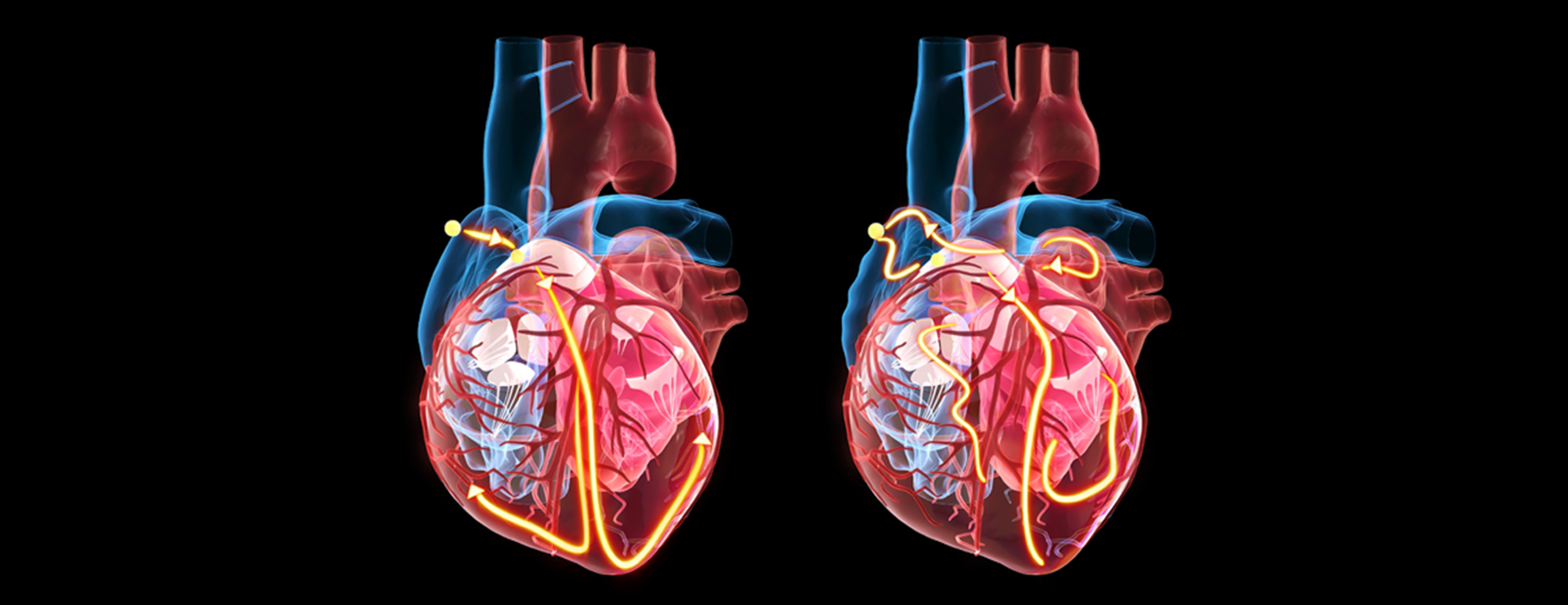Evaluation
To determine whether you have atrial fibrillation or another type of irregular heart rhythm, your doctor will order an electrocardiogram (EKG). This is a painless test that records the heart's electrical activity.
Because an irregular heartbeat can cause blood clots to form in the heart, your doctor may also want you to have a transesophageal echocardiogram (TEE). For this ultrasound test, the device that emits sound waves is passed down your esophagus, allowing the creation of clear heart images that will show any blood clots. The test is especially important if you take a blood thinner and have missed doses in the month before the procedure. If blood clots are detected, your procedure may be postponed a few weeks and you will likely be put on blood-thinning medications to reduce your risk of complications.
Procedure
For a chemical cardioversion, you'll be in the hospital for two to three days, so we can closely monitor your heart function during treatment. You'll receive drugs, such as dofetilide or sotalol, used to treat heart rhythm problems. If your heart doesn't regain a normal rhythm from this treatment, your doctor may recommend an electrical cardioversion.
An electrical cardioversion is an outpatient procedure. Most patients are at the hospital around three hours. Before the treatment, you'll receive an IV catheter, which facilitates delivery of medications that keep you relaxed and pain-free during the procedure.
The doctor will tape electrodes on your chest and possibly your back. The electrodes connect to a defibrillation machine that records your heartbeat and sends a brief electric current to your heart. This shock lasts less than one second and can reset your heart's rhythm. Your doctor will check to see whether your heartbeat is now regular. Some patients need more than one shock to restore a regular rhythm. The treatment itself takes only about five minutes, but with setup and sedation, the procedure requires about 30 to 45 minutes. Afterward, you are moved to a recovery room and monitored for about an hour. Most people can go home the same day.
Recovery
Immediately after the procedure, you may feel sleepy and your skin may be irritated and red where the electrodes were placed. You shouldn't drive for a day but may resume other normal activities right away. You can drink and eat when you feel ready.
Your doctor may prescribe medications to help your heart maintain a normal rhythm and to prevent blood clots. Your doctor also may suggest lifestyle changes to improve your heart health and to treat conditions, such as high blood pressure, that can cause an irregular heartbeat. You will have a follow-up appointment with your doctor approximately one month after the procedure.
Risks
Though uncommon, possible complications of cardioversion include:
- Dislodged blood clots – Some people with an irregular heartbeat have blood clots in their hearts. The treatment can dislodge the clots and allow them to travel to other parts of the body, where they can cause life-threatening complications, such as a stroke.
- Abnormal heart rhythms – Rarely, patients develop other heart rhythm problems during the procedure. If this occurs, it is usually minutes after the treatment and can be corrected with medications or additional electric shocks.
- Skin burns – The electrodes occasionally cause minor burns, similar to a sunburn.


















